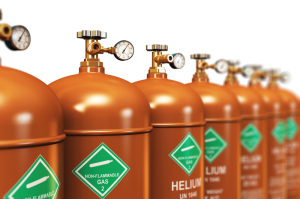From the October 2017 issue of HealthCare Business News magazine
While most people probably think of party balloons and chipmunk voices when helium comes up, in the medical industry folks are well aware that this non-renewable resource is part of a powerful industrial gas market – and much more than fun and games.
Although helium is abundant in the universe, it’s a non-renewable resource that can be hard to come by on Earth.
The industry is dominated by just a few large companies, such as Air Liquide, Air Products and Linde. Praxair, another leader in the helium industry, announced plans to merge with Linde late last year.



Ad Statistics
Times Displayed: 46665
Times Visited: 1410 MIT labs, experts in Multi-Vendor component level repair of: MRI Coils, RF amplifiers, Gradient Amplifiers Contrast Media Injectors. System repairs, sub-assembly repairs, component level repairs, refurbish/calibrate. info@mitlabsusa.com/+1 (305) 470-8013
The combined companies, based on 2015 financials, would have pro forma revenues of about $30 billion and a present market cap above $65 billion, according to the companies, allowing them to emerge at the top of the industry.
The U.S. is the largest producer and supplier of helium, followed by Qatar and Russia, each of which has plans to increase helium production in the near future. Through its East Siberian Gas Program, which is planning on tapping large gas reserves in Irkutsk and Yakutia, Russia is aiming to become the world's largest helium producer.
So what does all this have to do with health care?
Helium, in its ultra-cold liquid state, is what allows MR magnets to become superconductive and gives them their diagnostic value. So, as the behemoths of the gas industry shuffle the deck, it could have real-world implications for MR imaging providers.
HealthCare Business News reached out to several experts with a finger on the pulse of the helium market to get a better idea of shifts in the industry and how evolving technology is changing the way providers think about the natural gas.
Greater supply, smaller demand?
In the old days, helium boil-off was a constant reality in maintaining even the most sophisticated MR systems. But in recent years, improvements in technology have resulted in less boil-off, and therefore, less of an investment in helium. As helium prices have trended upward over the last several years, this is a good thing.
Historically, magnets were kept at 10 degrees Kelvin. But today, most new MR magnets are at 4 degrees Kelvin. That colder temperature means less helium is boiled off and systems don’t need to be topped off as often.
Helium shortages, like the one from 2011-2013 when several U.S. plants had production issues, have hastened the adoption of new zero boil-off technology, in which helium is recondensed and brought back to a liquid state.
Zero boil-off can mean huge savings in terms of helium spending, but some experts say preventive maintenance is key to reaping those benefits.

